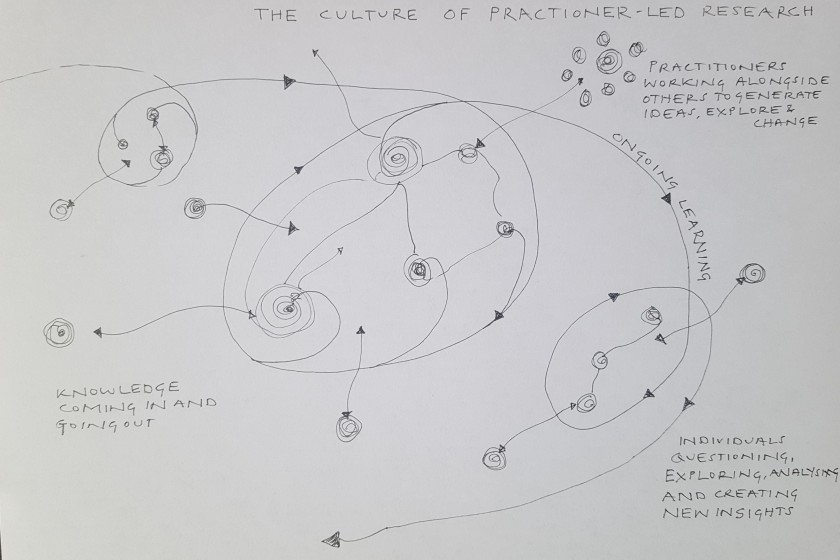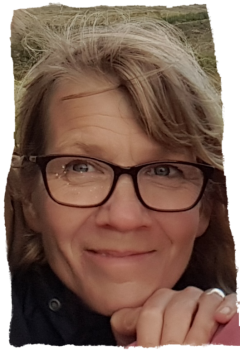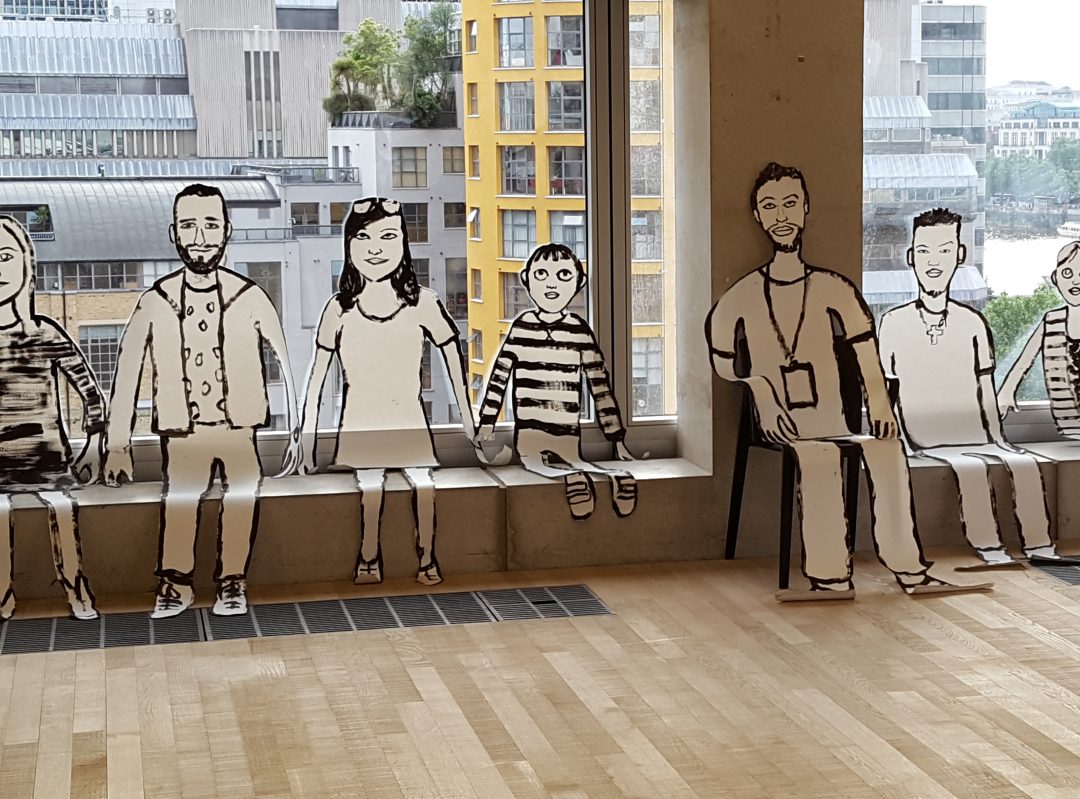Next week on August 21st I return to my role as Head of Learning Practice and Research at Tate. My sabbatical, which started on September 1st last year has come to an end. In the last few weeks I have been fully occupied in finishing the book – ‘Rethinking Research in the Art Museum’ – which is due to be published by Routledge next year, all being well. The book brings together this year’s explorations to make a case for an expanded conception of research in the art museum and to argue for the museum as a whole to be research-led. Perhaps inevitably, as this period of research and writing ends I have been reflecting back on the experience and trying to distil what I have learnt from it.
In the first instance I have come to understand the workings of the art museum more clearly. Stepping back from the institution has allowed me to makes sense of the various agendas and at times conflicting pressures that are present at all times. In particular I have identified what I refer to as the four discourses of the art museum, which determine at various times how an organisation defines itself and prioritises its time and resources. I wrote about these in a previous blog here. These agendas – collection care and expansion, financial sustainability, academia and democratic participation – each have implications for research and how it is conceived and undertaken. Articulating them has helped make sense of why the current framing of research is confusing for many of the museum professionals I spoke to, who are often caught between the discourses, trying to satisfy the demands of all of them.
I have also learnt a great deal about the role of the museum professional. Looking at the literature on what constitutes a professional has helped me to understand the relationship between the specialist knowledge a curator or museum educator has, for example, and how this affords them independence to make decisions about their work. This independence reflects the trust that these individuals, as professionals, are given but comes with a responsibility to make wise decisions in the best interest of the greater good. In particular I have come to realise how much the museum professional’s and the museum’s credibility depends on trust by the public. And I now see how important it is that the museum is mindful of its responsibilities, not only to art and artists, but to all those affected by the decisions it makes. I wrote about how trust can be compromised here.
I have spent time interrogating my experience of implementing practice as research with colleagues at Tate and been able to gain a clearer sense of the value of this work, but also how much more can be done. I wrote about some of my experiences here. Interviewing Tate colleagues reminded me of the importance of making time for thoughtful reflection, but also how difficult this can be when the pressures of programming are ever increasing. Yet I remain inspired and hopeful. I have seen how practice as research embeds questioning, analysis, contextualisation and the sharing of findings into practice and the benefits this brings to people and programmes.
One of the delights of this research has been spending time at other organisations learning from their good practice. My visits to Trapholt in Denmark, the Irish Museum of Modern Art in Dublin, the Harvard Art Museums in Boston and the Knowle West Media Centre in Bristol have revealed the potential for more inclusive, co-operative and action-oriented research. I have witnessed how practitioner researchers in art museums and community arts centres can work in collaboration with academics, community members and visitors to the museum in a research relationship. From this I have been able to picture what a thriving practitioner-led research culture in the art museum looks like.
My own visual representation resembles an organic and shifting, but purposeful constellation, where individual practitioner-researchers are involved in their own circular processes of questioning, exploring, analysing and creating new insights, within an overarching progression of ongoing learning. My visualisation sees knowledge coming in and going out from the organisation, in part through co-research with academics and non-academics. I see it as a transparent, non-hierarchical and dynamic yet reflexive culture, where practitioners are in dialogue with each other and others. Here they are testing ideas and exploring with care the relevant issues that can inform their work. And they are generating original knowledge that goes out into the world. It is organic in the sense of flexing and adapting as new learning emerges, and it is purposeful because it operates with a clear understanding of its values, aims and ambitions.

I have seen this culture in action in different organisations and marvelled at the positive difference it makes to how people work and the quality of the knowledge and activity that is enabled within it.
My own research has been practice-based, in that it has been emergent, exploratory, interdisciplinary and situated in my own experience. It has been centred in my own practices of art making, dialogue, reflexivity and creative learning. And at the risk of becoming overly self-referential, undertaking this research has illuminated to me how research that originates in and acknowledges the experience and perspective of the researcher operates. Yet within this I have come to recognise the absolute necessity of sharing and testing findings with colleagues throughout the research. That more than anything has been the pleasure of this sabbatical; the opportunity to develop ideas and discuss and refine them with knowledgeable and generous colleagues. More than anything I have come to see the value of dialogue in any process of enquiry.
Although my sabbatical has ended I fully intend to continue writing this blog, which I have found to be a fantastic vehicle for trying out and communicating ideas. From now on, however, it will be written from the perspective of a practitioner researcher in the art museum, rather than observing it.


Hi Emily
So glad your research is successfully completed. I am going to take time to read the complete blog and revert. Looking forward to your book too.
All the best!
Love
Reena
LikeLike
Thanks so much Reena – it has been an extraordinary year. Hope all well with you. Warm wishes Emily
LikeLike
Congratulations Emily, I’m delighted to hear that this blog will continue as it’s been an inspiration to me on each reading. It’s been a great touchstone to know that when I access it I’ll find thoughtful reflection on our shared practice. I hope your return to work is a smooth transition. Helen
LikeLike
Hi Emily, I’ve really enjoyed reading your blogs throughout the year. I’m looking forward to your publication. Your work has been enormously helpful to me in thinking and talking about the work we do in museum learning and public programs. It is an area that is often not terribly well understood, even by the rest of the museum. There is so much more we can do.
Looking forward to reading more of your work.
Congratulations and best wishes
Sheona
LikeLike